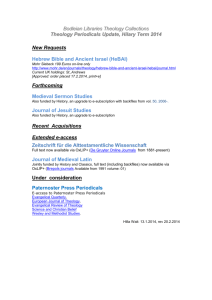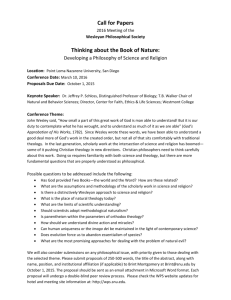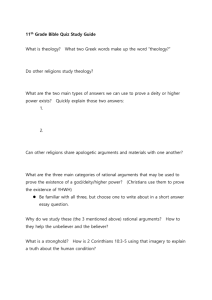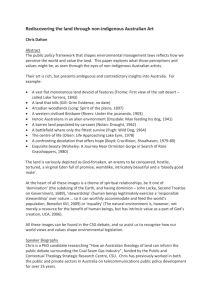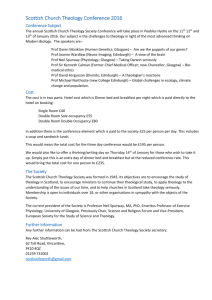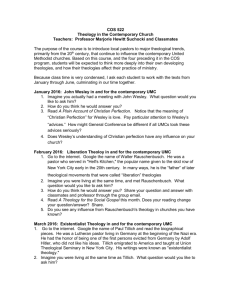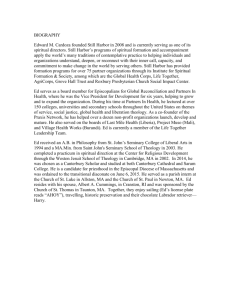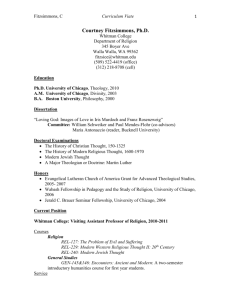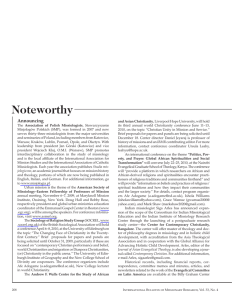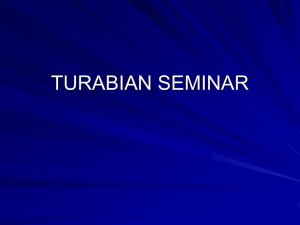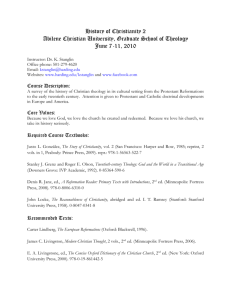sample page here - Tyndale University College & Seminary
advertisement
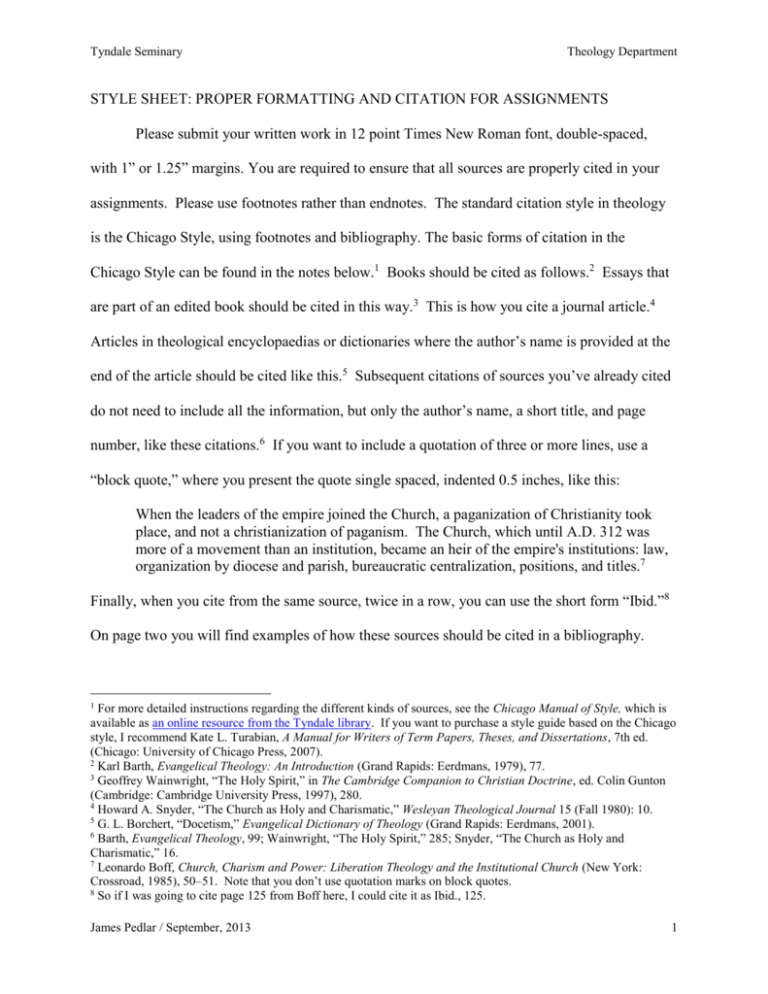
Tyndale Seminary Theology Department STYLE SHEET: PROPER FORMATTING AND CITATION FOR ASSIGNMENTS Please submit your written work in 12 point Times New Roman font, double-spaced, with 1” or 1.25” margins. You are required to ensure that all sources are properly cited in your assignments. Please use footnotes rather than endnotes. The standard citation style in theology is the Chicago Style, using footnotes and bibliography. The basic forms of citation in the Chicago Style can be found in the notes below.1 Books should be cited as follows.2 Essays that are part of an edited book should be cited in this way.3 This is how you cite a journal article.4 Articles in theological encyclopaedias or dictionaries where the author’s name is provided at the end of the article should be cited like this.5 Subsequent citations of sources you’ve already cited do not need to include all the information, but only the author’s name, a short title, and page number, like these citations.6 If you want to include a quotation of three or more lines, use a “block quote,” where you present the quote single spaced, indented 0.5 inches, like this: When the leaders of the empire joined the Church, a paganization of Christianity took place, and not a christianization of paganism. The Church, which until A.D. 312 was more of a movement than an institution, became an heir of the empire's institutions: law, organization by diocese and parish, bureaucratic centralization, positions, and titles.7 Finally, when you cite from the same source, twice in a row, you can use the short form “Ibid.”8 On page two you will find examples of how these sources should be cited in a bibliography. 1 For more detailed instructions regarding the different kinds of sources, see the Chicago Manual of Style, which is available as an online resource from the Tyndale library. If you want to purchase a style guide based on the Chicago style, I recommend Kate L. Turabian, A Manual for Writers of Term Papers, Theses, and Dissertations, 7th ed. (Chicago: University of Chicago Press, 2007). 2 Karl Barth, Evangelical Theology: An Introduction (Grand Rapids: Eerdmans, 1979), 77. 3 Geoffrey Wainwright, “The Holy Spirit,” in The Cambridge Companion to Christian Doctrine, ed. Colin Gunton (Cambridge: Cambridge University Press, 1997), 280. 4 Howard A. Snyder, “The Church as Holy and Charismatic,” Wesleyan Theological Journal 15 (Fall 1980): 10. 5 G. L. Borchert, “Docetism,” Evangelical Dictionary of Theology (Grand Rapids: Eerdmans, 2001). 6 Barth, Evangelical Theology, 99; Wainwright, “The Holy Spirit,” 285; Snyder, “The Church as Holy and Charismatic,” 16. 7 Leonardo Boff, Church, Charism and Power: Liberation Theology and the Institutional Church (New York: Crossroad, 1985), 50–51. Note that you don’t use quotation marks on block quotes. 8 So if I was going to cite page 125 from Boff here, I could cite it as Ibid., 125. James Pedlar / September, 2013 1 Tyndale Seminary Theology Department BIBLIOGRAPHY Barth, Karl. Evangelical Theology: An Introduction. Grand Rapids: Eerdmans, 1979. Boff, Leonardo. Church, Charism and Power: Liberation Theology and the Institutional Church. New York: Crossroad, 1985. Borchert, G. L. “Docetism.” Evangelical Dictionary of Theology. Grand Rapids: Eerdmans, 2001. Snyder, Howard A. “The Church as Holy and Charismatic.” Wesleyan Theological Journal 15 (Fall 1980): 7-32. Turabian, Kate L. A Manual for Writers of Term Papers, Theses, and Dissertations. 7th ed. Chicago: University of Chicago Press, 2007. Wainwright, Geoffrey. “The Holy Spirit.” In The Cambridge Companion to Christian Doctrine, edited by Colin Gunton, 273-296. Cambridge: Cambridge University Press, 1997. James Pedlar / September, 2013 2

